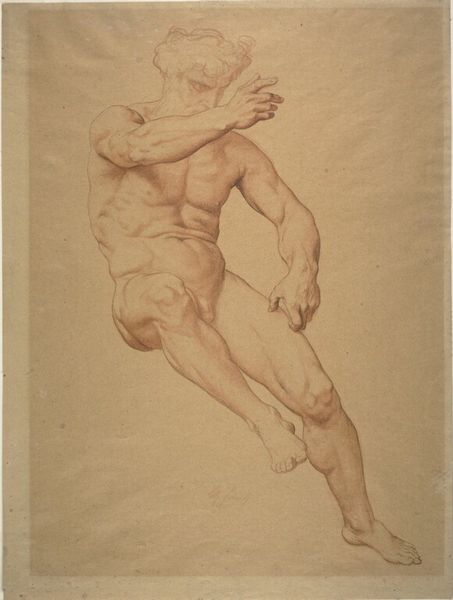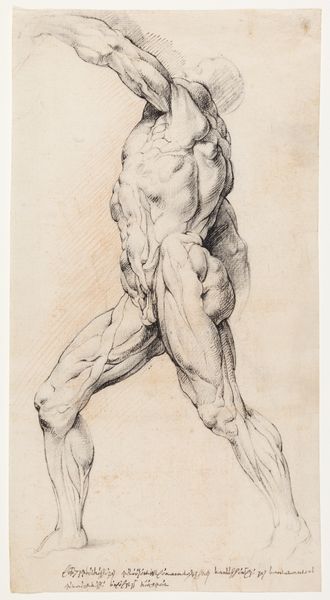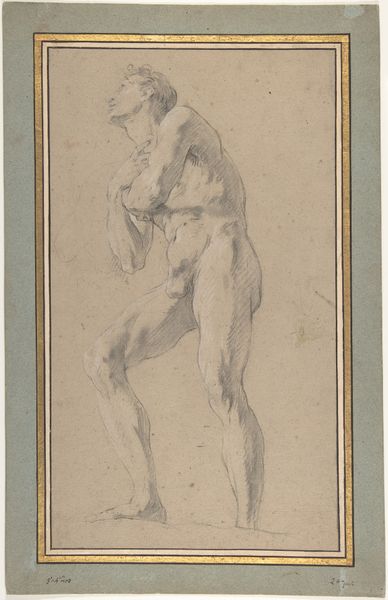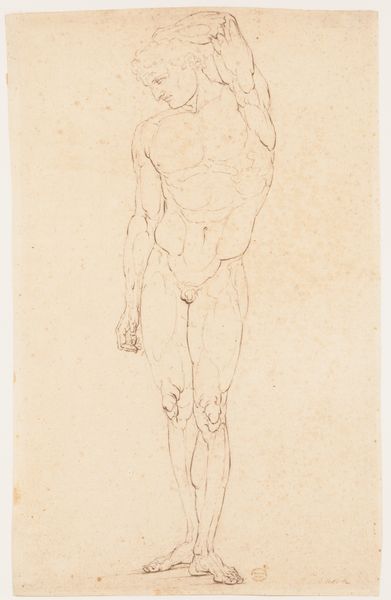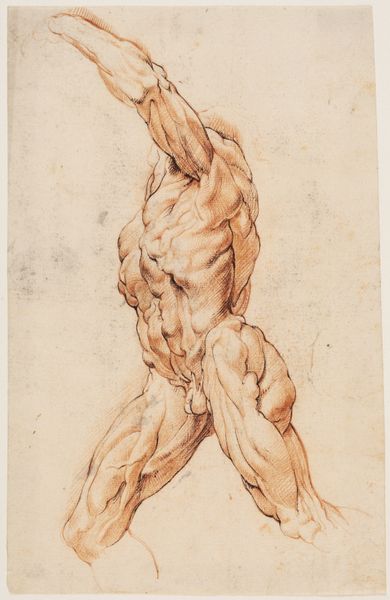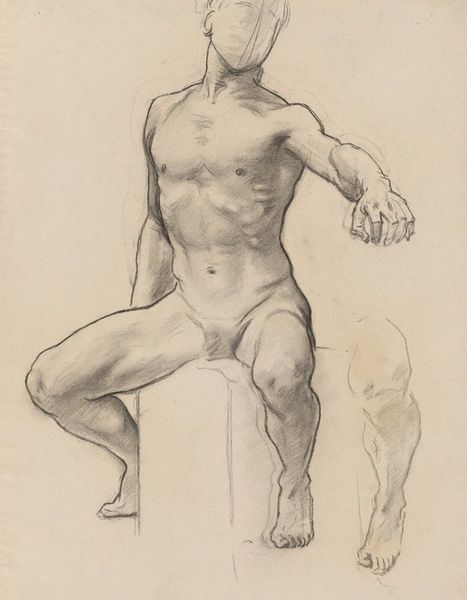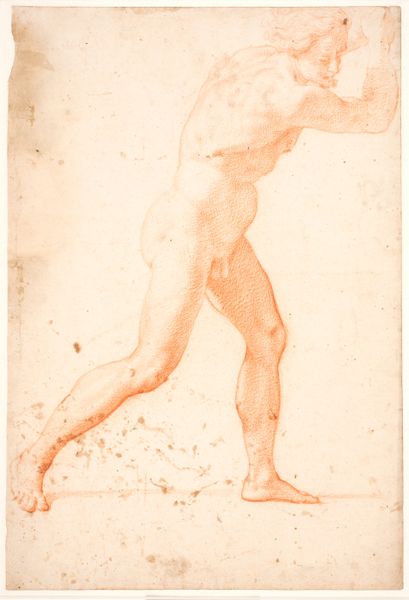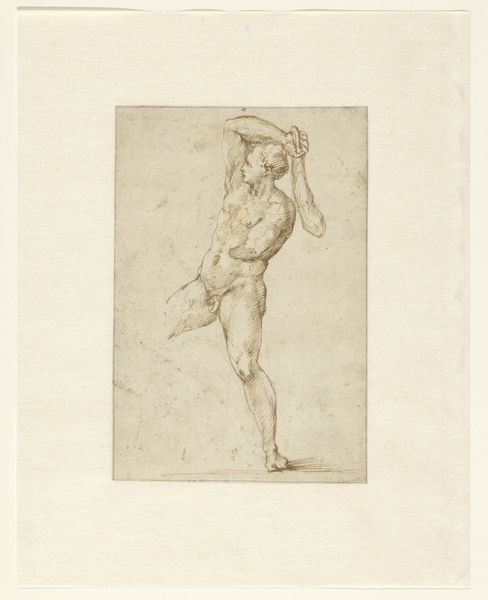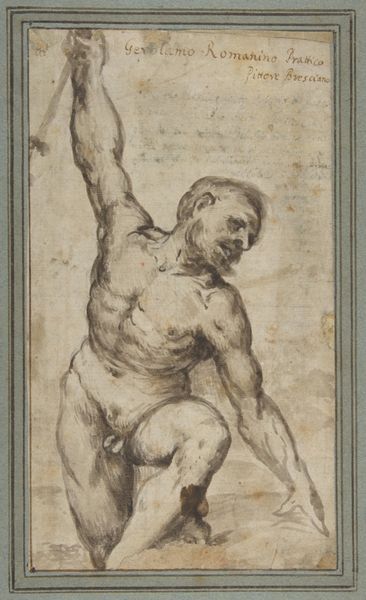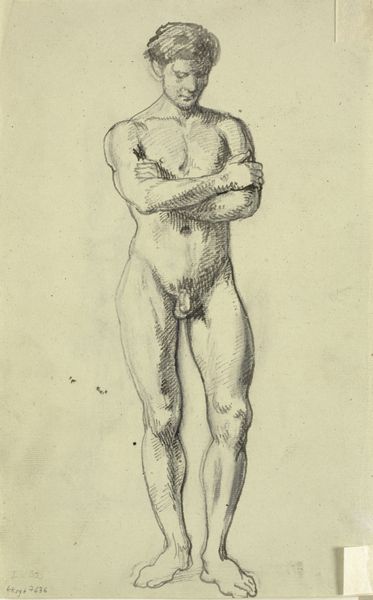
drawing, paper, ink
#
drawing
#
baroque
#
figuration
#
paper
#
ink
#
history-painting
#
academic-art
#
nude
Dimensions: height 257 mm, width 154 mm
Copyright: Rijks Museum: Open Domain
Curator: Standing before us is "Antiek beeld van de Sandalenbinder," or "Antique Statue of the Sandal Binder," a drawing attributed to Giovanni Battista Tiepolo, likely created sometime between 1706 and 1770. Editor: Wow, the musculature is so pronounced, almost theatrical. It has this dramatic weight, but simultaneously, the ink wash makes it feel surprisingly light, ethereal, even. Curator: Exactly! Tiepolo employed ink on paper, creating this arresting chiaroscuro effect. Note the stark contrasts of light and shadow – it directs our gaze. But considering the date, don’t you think the social context heavily informed the artwork as well? Think about academic art being centered around rediscovering the "golden age" of ancient civilization and disseminating those ideologies across the European art world at that time. Editor: That's a good point! This would likely have been circulated amongst studios for students to emulate. And Tiepolo, coming from Venice, where color usually takes precedence, used this very tactile, almost sculptural approach. He’s clearly emphasizing form through light and shadow, and what’s key to note is how his masterful command of the wash coaxes out three-dimensionality on the paper itself, as well as his use of locally sourced materials to engage the viewer with the context behind art-making practices of 18th century workshops. Curator: The pose, too, feels almost performative, don’t you think? We’re not simply observing a figure, but presented with a certain kind of stoicism, power. This statue would have represented particular ideals, feeding into the era's fascination with antiquity and informing aristocratic values. Editor: Yes, there is this undeniable monumentality to the artwork that alludes to classical artistic traditions, but it all leads to that one mundane act: the tying of a sandal. It brings the mythological or ideal down to earth, if only for a brief moment, reminding me of the accessibility and pragmatism woven into even the loftiest artworks. Curator: Well, looking at this drawing and analyzing the impact of Tiepolo, his processes, and social status truly reminds us how the socio-cultural lens shapes the way art influences societal progress and even contributes to class struggles. Editor: And by focusing on materiality, it reminds us to see beyond aesthetics, considering how everyday acts shape art-making, blurring high art and functional forms, urging new perspectives.
Comments
No comments
Be the first to comment and join the conversation on the ultimate creative platform.
